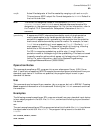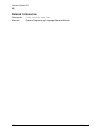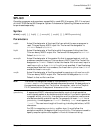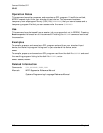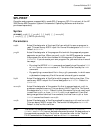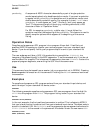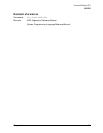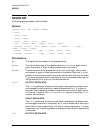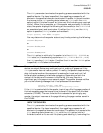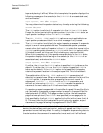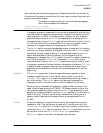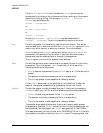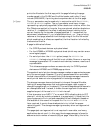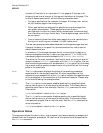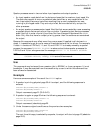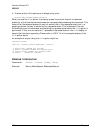
Chapter 8 623
Command Definitions SP-Z
SPOOLER
The STOP parameter terminates the spooling process associated with the
specified device. If a class is specified, then spooling processes for all
devices in the specified class are terminated. A spooler in the active state
first moves to the STOP pending state (shown as *STOP with the SHOW
option) while it finishes its work on its current file (including any required
trailer). When this is complete, or if the spooler was previously in the idle
state, the spooler displays the following on the console (or the $STDLIST of
an associated user) and terminates. If neither the OPENQ nor the SHUTQ
option is specified, SHUTQ is taken as the default.
Output spooler, LDEV #ldev: Stopped.
You may determine the spooler state at any time by entering the following:
SPOOLER ldev;SHOW
or
SPOOLER devclass;SHOW
or
SPOOLER devname;SHOW
The STOP option is valid only if a spooler is in the ACTIVE, SUSPEND or
IDLE state, or (if accelerating a previous STOP ;FINISH to STOP ;NOW)
the STOP pending (*STOP) state. If neither the NOW nor the FINISH option
is specified, NOW is taken as the default.
NOTE Because of the large amount of data buffered in the file system and the
device, an output device may continue to print, making it appear as if the
STOP parameter has not had any effect. In reality, the spooler stops sending
data to the device when the command is received but must wait until all
buffered data has been printed before stopping. Depending on both the
content of the data and the amount of buffering, this may require a
significant part of a page or even several pages. The spooler process notifies
you via the following message that it has processed the command:
IOutput spooler, LDEV ldev:
Received a command while outputting a file
If the STOP is received while the spooler is printing a file, the page number of
the last complete page that was printed is saved in the spool file's file label
extension (FLABX). The next time the file is selected for printing by any
spooler, the output resumes at the page following the page number saved in
the FLABX.
INPUT SPOOLERS:
The STOP parameter terminates the spooling process associated with the
specified device. If a class is specified, then spooling processes for all
devices in the specified class are terminated. The spooler first moves to the
STOP pending state (shown as *STOP with the SHOW option) while it
finishes its work on its current file (closing and deleting it; rewinding the



